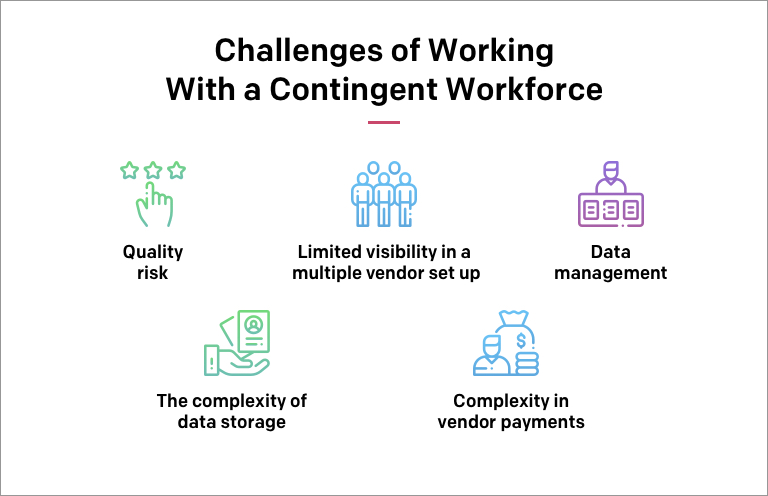The gig economy is going global. In the US, estimates show that more than one-third of the people work as freelancers. Asia leads the freelancer market globally and is still growing.
There are several factors that have led to the growth of the freelance economy over the years.
- There is a growing number of Gen-Z into the workforce and for them having a flexible schedule is important, hence they choose to work independently over a regular day’s job.
- By 2020, millennials will be largest workforce in the global economy. They are very clear and specific with what they want from their employers, and freelancing gives them the opportunity to work with a wide spectrum of organizations.
- The rising cost of living is another major reason for the growth of freelancers. People are working on multiple short-term projects including their day-job to augment their income. According to a survey, 4 out of 10 people have a side job to supplement their current income.
- Beyond all the above examples, technological advancement remains one of the major reasons why the freelancer economy is growing. Cloud has opened up innumerable opportunities with the scope of accessing data anywhere, with a decent internet connection. This fact has helped enterprises hire freelance workers with specialized skills on a short-term basis.
The Growing Freelancer Economy
With the rise of a generation that demands flexible timings and looking to supplement their earning potential, the freelancer economy is growing and a number of people are becoming comfortable with it. According to a report:
- 72% have the amount (or more) of work that they want
- 92% expect work opportunities for freelancers to increase in the future
- 90% believe the best days are ahead for freelancing
There are ample opportunities in freelance work, where gig workers can earn substantially. The report mentioned above also found that 82% of freelancers have earned more when compared to others, with similar experiences or work.
Owing to the popularity of this trend, even enterprises are cashing in on this huge pool of talent from multiple domains and skillsets – marketers, designers, developers, recruiters, and many more. Almost every skillset an enterprise requires can be found in freelancer marketplaces such as Upwork or Yoss.
Enterprises of Every Scale are Choosing Freelancers
According to a recent survey, business leaders expect to achieve a 66:34 split between permanent and temporary workers by 2023. Some of the biggest enterprises like Bloomberg, Conde Nast, and even Facebook employ freelancers for multiple projects.
Facebook engages freelancers for a number of purposes such as content writing, checking technical bugs, advertisements, etc. Conde Nast has a team of freelancers for an array of jobs such as beauty closet freelancers, bookings assistant, magazine photo assistant, and photo producer. It often uses freelance writers for filling up editorial spaces in many of its publications. Similarly, Walmart employs freelancers to execute jobs like digital content designers, pricing analysts, and temporary bilingual specialists.
There are various reasons why enterprises of every scale are choosing to work with freelancers. Some of these are:
- Increasing adoption of new technologies that allow for greater workplace flexibility such as collaboration tools and offer businesses a more flexible approach to how they manage key project initiatives and workload fluctuations
- Difficulty in acquiring specific skills on a permanent basis owing to the worldwide war for talent
- Ever-evolving complexity and dynamic nature of traditional job roles.
Challenges of Working With a Contingent Workforce
While there are numerous benefits of having a contingent workforce, it also comes with its set of challenges to manage them. Some of these are-

- Compliance risk – Not always will an enterprise find a freelancer who may match its standards and work according to compliance practices. It is important to choose a vendor who meets the requirements of an organization in terms of both compliance and performance.
- Quality risk – It is difficult to gauge the delivery quality of a vendor beforehand and check if references and work samples provided are authentic. It can also become tedious to do background checks for every vendor while working with multiple of them.
- Limited visibility in a multiple vendor set up – While engaging multiple vendors it becomes extremely difficult to manage the data of each one of them. It is important to have a centralized data storage solution for managing vendor data, and also manage & allocate resources efficiently.
- Data management – While it is really important to have a consolidated storage solution for managing vendor data, this also benefits the organization from a centralized view and enhanced visibility that can lead to better resource allocation and improved efficiency.
- The complexity of data storage – Depending on the number of vendors it can become extremely complex to store, retrieve and manage data from multiple vendors on multiple projects.
- Complexity in vendor payments – Managing vendor payments is extremely important. While working with multiple vendors it is essential to adhere to different payment terms in reference to the vendor data and ensure timely payments, which can become tedious without an automated platform.
Benefits of Deploying a Vendor Management System (VMS)
Vendor management can empower enterprises in controlling costs, reducing risks source and manage & deliver value from the contingent workforce. Some of the benefits of employing vendor management systems are –

- Efficient Selection of Vendors – The right vendor management system can provide your, organization with a large selection of vendors, and ensure that you can choose the correct vendor in the given budgets.
- Efficient Contract Management – Managing a multiple vendor scenario requires managing multiple documentations, contracts, compliance management, etc. A vendor management system can provide a centralized view of all contracts and other useful information, thereby helping in efficient vendor management and enable you to achieve better decision-making capabilities to save valuable time.
- Better Vendor Performance Management – Implementing a vendor management system can provide your enterprise with an integrated view of the performance of all vendors. It also helps to gather timely intelligence about all the operations and take timely actions, ultimately leading to improved efficiency that in turn enhances the organization’s overall performance.
- Better Vendor Relationship – Managing multiple vendors can be an uphill task in the lack of an automated platform. A vendor management system can help your organization easily manage, pay and maintain a long-term relationship with all your vendors.
Technologies Augmenting VMS Platforms
As the technology landscape evolves, legacy VMS platforms are evolving too by adopting new-age technologies. The ones reshaping the industry are –
- Machine Learning and Artificial Intelligence
ML and AI technology can also help choose the right vendor and assign the right work model, based selected vendor’s work history and also manage legal compliance. ML and AI can also help in building customized dashboards to manage and view vendor data as required.
- Mobile Device Platforms and Apps
Mobile platforms can help in managing multiple vendors on-the-go. Vendors and managers can engage with the VMS anytime and from anywhere and log-in relevant information, status, etc. Mobile can help in offering a great user experience to vendors and managers.
- Predictive Analytics
With the increase in data volume and data capture fields, technologies like predictive analytics are helping track and measure past behavior and provide predictive analytics on market trends. Besides, it can also help manage vendor data and drive insights from the data.
One example of how predictive analytics augments vendor management is IQN’s cognitive intelligence engine, named ATOM (Automated Talent Ontology Machine). This harnesses predictive analytics to provide real-time recommendations on rates, time-to-fill, labor demand modeling and industry benchmarking
The Future of Vendor Management System
With various forms of freelancer work-force evolving – be it individual or through a staffing firm – the VMS platforms will assist to compare, vet, select and onboard different types of third-party talent side-by-side through integrated systems. The VMS of the future will be about sourcing, provisioning and managing all forms of non-employee talent.
With the rise of the contingent workforce an organization uses, a VMS will need to provide a more secure and efficient platform for risk management. In this scenario, there is an opportunity for the evolution of a blockchain-like architecture ultimately be used to manage this sort of information, tied to a platform-as-a-service (PaaS) model for sharing across diverse VMS and services procurement systems.
Also, technologies like AI/ML, etc. will help to create VMS platforms that not just help organizations with vendor intelligence but business and market intelligence as well. Giving information beyond labor rate intelligence.
As the contingent workforce and employees work side-by-side for enterprises, VMS platforms will help talent teams bridge the gap between managing both and tap into & manage workers with specialized skills and drive value to the businesses.





